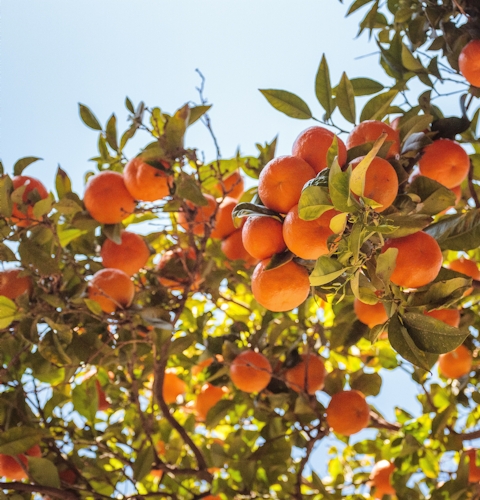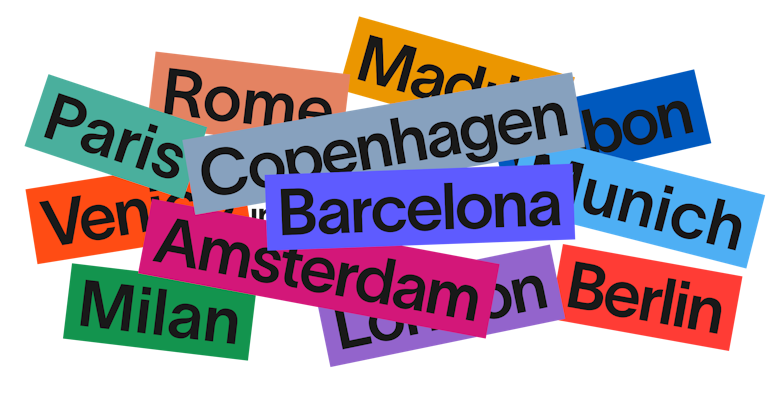
Get to know Spain for real this time
Discover the Authentic Spanish Culture
03/2022 - Carmen Stroud
Time to set the record straight
What comes to mind when you hear the word ‘Spain’? Ah yes, hot temperatures, crystal clear waters, sangria, tapas and good old Flamenco. But what if we told you these are all misconceptions? Although things like Flamenco, tapas and siestas do form part of the Spanish culture, they’re huge generalisations that compromise Spanish identity. These misconceptions allow other cultural traditions to be completely overlooked, and many tourists miss out on an authentic experience–some even return without getting to know Spain at all. But no stress; we got your back. Here are some fun facts and off the beaten track tips to help you have more of an authentic experience next time you visit Spain!
Let’s start by breaking down some of these common misconceptions and offer a new, more comprehensive perspective…
Spanish traditions
First of all, not all Spaniards dance Flamenco. You’re likely to encounter a female in a traditional red dress in Spain, tapping her heels and singing passionately. This is famously known as Flamenco—an art of Andalusian origin that integrates dance, singing and guitar. This dance has become symbolic of Spanish culture and is even recognised as part of UNESCO’s World Intangible Cultural Heritage. Famous for its emotional intensity and graceful movements, Flamenco’s well-known reputation is hardly surprising! But beware: not every Spanish person dances Flamenco—or even likes the tradition.
Did you know Flamenco is actually a regional dance from the south, Andalusia? That's right, it's a regional dance and therefore not representative of the whole of Spain. The dance has been around for nearly 500 years and is deeply influenced by various other groups, such as Islamic, Andalucian, Sephardic and Arabic cultures. This has allowed the dance to transform and take on new styles over the years.
Each region dances to the rhythm of its own drum…
There are other Spanish regional dances too. The Jota, for example, is a regional dance originating in Áragon from around the 18th century. Dancers wear regional costumes and use the castanets—a peculiar instrument also known as a ‘clacker’. This dance is still about today and forms a big part of the local identity. Did you know Spain also has Celtic roots? The Muñeira is another traditional dance that derives from the Celtic culture. Dancers also wear regional costumes and play both the castanets and bagpipes (gaitas). The Muñeira comes from the north and west regions such as Galicia and Asturias.
Another example is the Sardana dance in Catalonia, where everyone dances to a live band called la 'cobla'. La Sardana is a very old dance and a significant symbol of Catalan identity. For culture enthusiasts, Spain is the place for you! These dances are performed during local festivals, where people gather on the street to celebrate. Why not dive into the local culture yourself and check out some of these festivals?
Another thing… Spain isn’t just hot
I don’t know about you, but I love hot summers and sunbathing all day with a good book. And let’s face it—we all go to Spain for the weather and the tan. But here’s something unexpected: you can ski in Spain!
Yeah, I didn’t know that either.
Spain has a relatively diverse landscape, actually. Madrid, for instance, has mountains like Puerta de Navacerrada where you can go skiing, while Granada has the Sierra Nevada mountain range, which houses a ski resort and offers magnificent views. And in the North and West of the country, there are loads of luscious green spaces due to the immense amount of rainfall! Picos de Europa, part of the World Heritage Site UNESCO, is Spain’s only inhabited nature reserve. Here you get magnificent views of lakes, gorges, forests and peaks like the Naranjo de Bulnes, though the weather here is quite unpredictable. So as you can see, it isn’t all sun, sand and sea! Even better, you can enjoy various activities here in Spain– perfect for any kind of taste.
Spanish food culture
Not to be biased, but there’s a reason why Spain’s cuisine is so famous. You probably know what paella is or have tried it already—and it is pretty damn good. But again, it is a misconception that all the Spanish eat paella. It does get annoying when people assume we all cook a mean paella too—whenever I mention my Spanish heritage, I get asked to cook a paella!
And here’s the deal: paella is not actually a national dish but a regional one. Did you know paella originated in Valencia? Instead of seafood, it’s cooked with chicken or rabbit! If you want to try an authentic and delicious paella, go to Valencia. During festivals like Las Fallas, the Valencianos cook up some real tasty paella on the streets for people to share! The Fallas is a great way to get a feel of the community, meet locals and try out some local specialities. If you’re ever in Spain around March, definitely take a trip to this city for the Fallas– it's full of life, with firework displays, giant effigies, outdoor discos, and people dancing and drinking on the streets.
There are so many regional dishes in Spain that are just as tasty yet not as well-known. Forget patatas bravas, chorizo, jamón serrano and croquetas…
How about Pulpo de la Gallega? This is a Galician-style octopus dish (seems unusual, but that’s exactly the appeal). This dish is a great starter and simple—cooked with olive oil and paprika! It originated in the northwestern Spanish region of Galicia, where octopus is a speciality and a common catch for local fishermen. Another lesser-known regional dish is fabada Asturiana. This is a delicious stew from the mountains of Asturias in northern Spain. Its main ingredients are white Asturian butter beans (fabes), spicy chorizo, black pudding (morcilla) and a chunk of salty pork belly.
Another delicious Asturian delicacy is chorizo a la sidra, which is chorizo fried in their local cider. Try that as a side with a bit of ‘pan’ (bread), and you’re sorted for a heavy night of drinking 'Sidra'. Asturian Sidra (cider) is another local thing. The waiter usually pours the cider from above his head to produce a bit of foam from the carbonation. This method, called ‘esanciar’, produces the best flavour and you must take it as shots! On the weekend, you’ll find Asturians crowding the streets doing the botellón or drinking sidra from bars, along with some 'pinchos' (similar to tapas). Visit Spain’s different regions for their local dishes—you won’t regret it.
Spanish isn’t the only spoken language
So obviously, Spanish is the official language in Spain, but there are also five co-official regional languages spoken throughout the country. Castilian is the term for Spanish as we know it. This is the official language, spoken pretty much everywhere. Then there’s Catalan—a language that’s actually quite different to Spanish. It’s said to be more closely related to French and Italian. It’s the primary spoken language in Catalonia and a symbol of their identity.
In Valencia, they speak (you’re in for a shock) Valencian! Many locals speak this fluently and are very proud of their regional language. Other co-official languages are Aranese, Basque and Galician. Basque is fascinating as it developed in complete isolation from others. The language has no relation to any other in Europe, not even any other known living language outside of Europe. During Franco’s regime, the use of the language was repressed and almost lost for good, but many of the Basque regions have been able to preserve and keep it alive.
Want an authentic Spanish experience? Book your stay with us and visit Barcelona, Madrid or Seville to discover more hidden treasures.














